
Fixings
Nuts & Bolts - are used to join a wide range of materials. Thread sizes are usually metric and range from M3 to M12 in school workshops. A bolt can be used without a nut if an internal thread is cut into the material with a tap. Bolts and screws are made with a wide range of heads to be turned with a spanner or a screw driver. The head can be countersunk so that it finishes flush with the surface or it can have a head which is proud of the surface - cheese head, pan head dome head, hex head, allen key head. Machine screws have the thread all the way up. |
| Nuts - Wing nuts are designed to be done up and undone by hand. This is particularly useful for maintenance. Square nuts and bolts are not often used. They are easy to undo with a wrench however. Often used in the workshop to bolt the vices down to the bench. Used in assemblies where the square nut is trapped against a moulded part. |
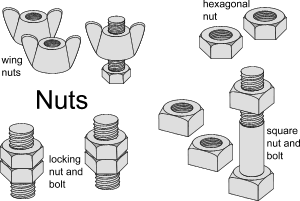 |
| Hexagonal Nuts The most common nut is the hex nut which has six sides. Most spanners are designed to be used with hex nuts. In the photograph hex nuts are being used on a hex bolt and on two pan-head screws.
|
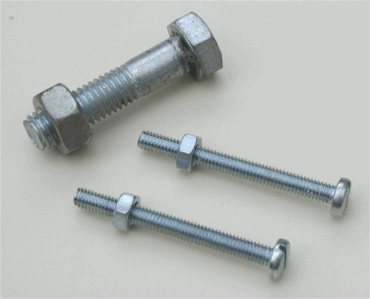 |
Nyloc Nuts Nyloc nuts have a piece of nylon trapped in a dome on the top of the nut. This prevents the nut from vibrating loose as the nylon thread, which is cut as the nut is tightened, grips the bolt. |
|
Locking nuts Two nuts can be used to lock into position. As one is tightened against the other neither will move. An example of this in use is on the pillar drill depth stop. |
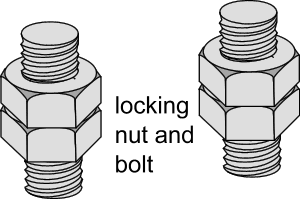 |
Washers Washers act as spacers, to spread the force, to protect the surface. They are also used to stop the nut or bolt working loose by increasing the grip between the mating surfaces. Tab washers have the tab folded - one up one down - to lock the nut against a projection. |
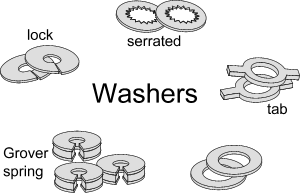 |
|
Rivets Rivets are a more permanent method of joining materials together. A head is formed on both sides of the materials being joined. Traditional rivets have the blank end hammered over and formed into the second head using a rivet set. These rivets are usually either countersunk or dome head and made from mild steel or aluminium (also copper). |
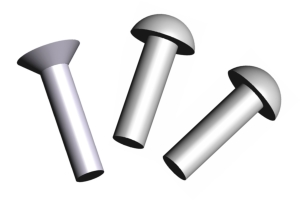 |
Pop rivets are a modern alternative developed for the aero-space industry where it was difficult or impossible to get to the blank end of the rivet. Pop rivets are put in place with a pop rivet gun.
|
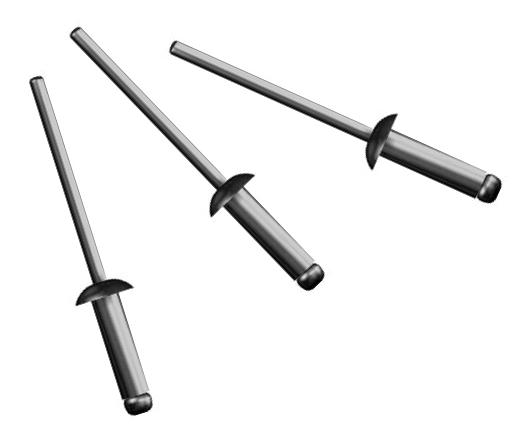 |
| The steel pin is pulled out through the centre of the rivet - the enlarged head deforms the bottom of the rivet. This continues until the steel pin breaks off just behind the head. The result is that the sheet materials are pulled very tightly together. |  |
Self tapping screws are an effective way of making temporary or removable joins. A pilot hole is drilled first and, ideally, a clearance hole in the first material. The self tapping screw will then cut its own thread as it is screwed in. This screw is a slot pan head. Pozidriv is also common. Some self tappers are also able to drill their own pilot hole. |
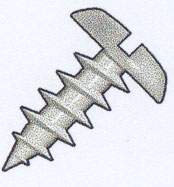 |
Split Pins or split cotter pin Split pins are usually made of steel. Once oinserted through a hole in a shaft the split ends are bent sideways to prevent them sliding out. This is a quick and effective fastening. |
 |
Castellated or Combination nut and split pin |
|
Clevis Pin Clevis pins refer to a class of non-threaded fasteners that are characterized by their low cost, reusability, and less precise design. Developed in the early part of the twentieth century, clevis pins were known as cornpicker pins because of their wide use in agricultural products. Generally, clevis pins are cold headed or turned from cold finished steel. The clevis pin is used as a simple coupling device and is secured by inserting a pin (e.g. a split or cotter pin) through the hole. |
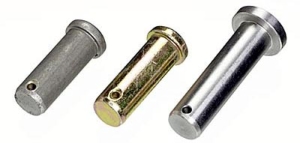 |
Push Fitting Axially-applied grooveless rings that provide good retention, particularly on parts with dimensional variations. Installed with a tube or plunger. |
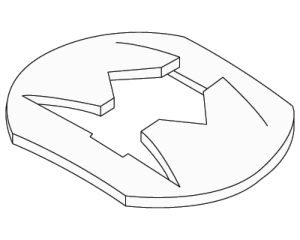 |
Spring roll pin Use instead of rivets, taper pins, split pins or bolts. The slot allows compression when inserted into a drilled hole. The material will then exert a continuous radial force in the hole. Rolled pins are hollow, cylindrical tube-style press fit fasteners with chamfered ends. They have been around a long time, and as a result there are an abundance of designs, materials, and finishes. Rolled pins are used as locking devices, positioning points, anti-chafing surfaces, shafts, or sleeves for wiring. Usage is limited only by your imagination and technological capabilities. Slotted pins are also known as roll pins or spring pins. Coiled rolled pins are sometimes referred to as spiral pins. |
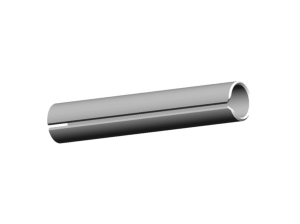 |
Circlips Tapered-design ring that is installed into a groove to provide a rigid shoulder for high thrust loads. Installed axially using pliers that expand the part over the shaft |
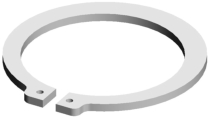 |

